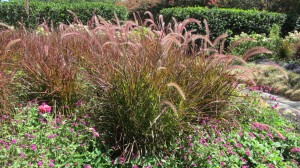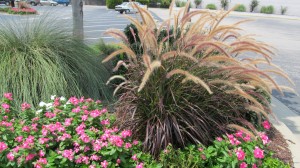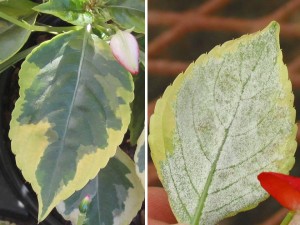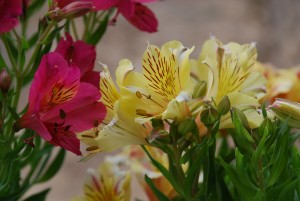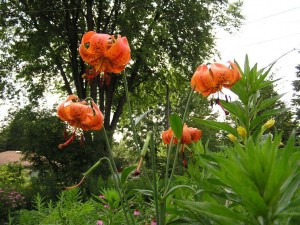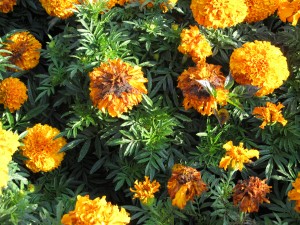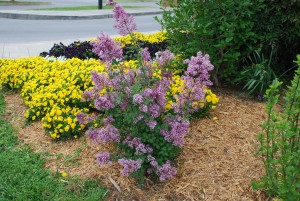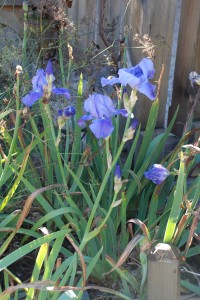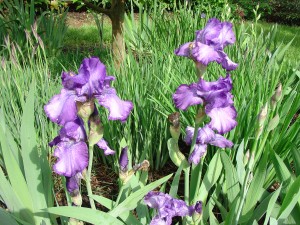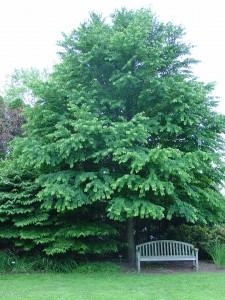Fountain grasses are popular annual grasses that thrive in Southern Appalachian gardens (USDA zones 6 and 7). The new cultivar ‘Fireworks’ is totally spectacular. The mid-vein of the grass blade is burgundy red and edged in hot pink.
Fireworks displays three seasons of awesome foliage color before dying off in the fall. Red plume foxtail flowers bloom from mid-summer to early fall. Fireworks grows as a thick clump that is 3-6 feet tall and 1-3 feet wide. Utilize Fireworks as an accent plant in landscape beds and containers.
Fireworks flourishes in full to partial sunlight (6-hours minimum) in average well-drained, low acidic soils (pH 6.0 to 7.0. Weekly irrigation is a plus. It establishes rapidly and tolerates short summer dry spells.
The vibrant tri-colored grass blades intensify in the early autumn cooler temperatures. In the deep South (USDA zones 7-b to 9), foliage colors often fade under extreme sunlight and heat (see photo above).
Fireworks should be fertilized at planting time with a 5-6 month rated slow release fertilizer. Another alternative is to feed monthly with water soluble Miracle-Gro™, Schultz®, or a similar product according to package rates.
Grass blades turn brown in the first hard autumn freeze. Snow or ice embedded ornamental grasses can be quite beautiful. You may opt to shear them back in early fall as the old floral heads (plumes) often self-seed. Fireworks fountain grass is relatively disease and pest free and is deer resistant.

